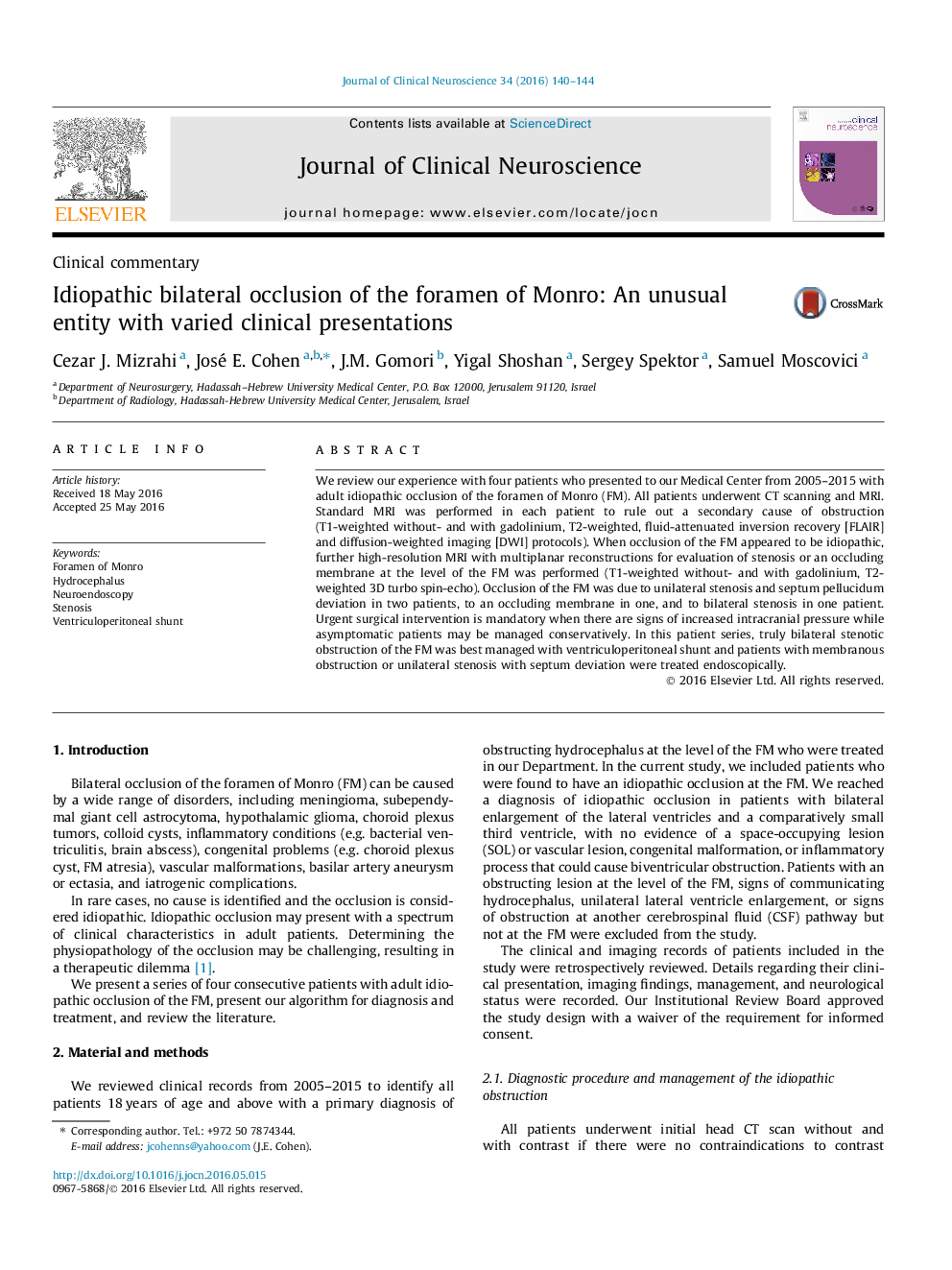| Article ID | Journal | Published Year | Pages | File Type |
|---|---|---|---|---|
| 5629870 | Journal of Clinical Neuroscience | 2016 | 5 Pages |
â¢Idiopathic bilateral occlusion of the foramen of Monro is a rare entity; clinical presentation varies.â¢The diagnosis requires high resolution multiplanar MRI evaluation.â¢Obstruction due to true bilateral stenosis is best managed with a VP shunt.â¢Membranous obstruction or unilateral stenosis may be managed with endoscopic techniques.
We review our experience with four patients who presented to our Medical Center from 2005-2015 with adult idiopathic occlusion of the foramen of Monro (FM). All patients underwent CT scanning and MRI. Standard MRI was performed in each patient to rule out a secondary cause of obstruction (T1-weighted without- and with gadolinium, T2-weighted, fluid-attenuated inversion recovery [FLAIR] and diffusion-weighted imaging [DWI] protocols). When occlusion of the FM appeared to be idiopathic, further high-resolution MRI with multiplanar reconstructions for evaluation of stenosis or an occluding membrane at the level of the FM was performed (T1-weighted without- and with gadolinium, T2-weighted 3D turbo spin-echo). Occlusion of the FM was due to unilateral stenosis and septum pellucidum deviation in two patients, to an occluding membrane in one, and to bilateral stenosis in one patient. Urgent surgical intervention is mandatory when there are signs of increased intracranial pressure while asymptomatic patients may be managed conservatively. In this patient series, truly bilateral stenotic obstruction of the FM was best managed with ventriculoperitoneal shunt and patients with membranous obstruction or unilateral stenosis with septum deviation were treated endoscopically.
